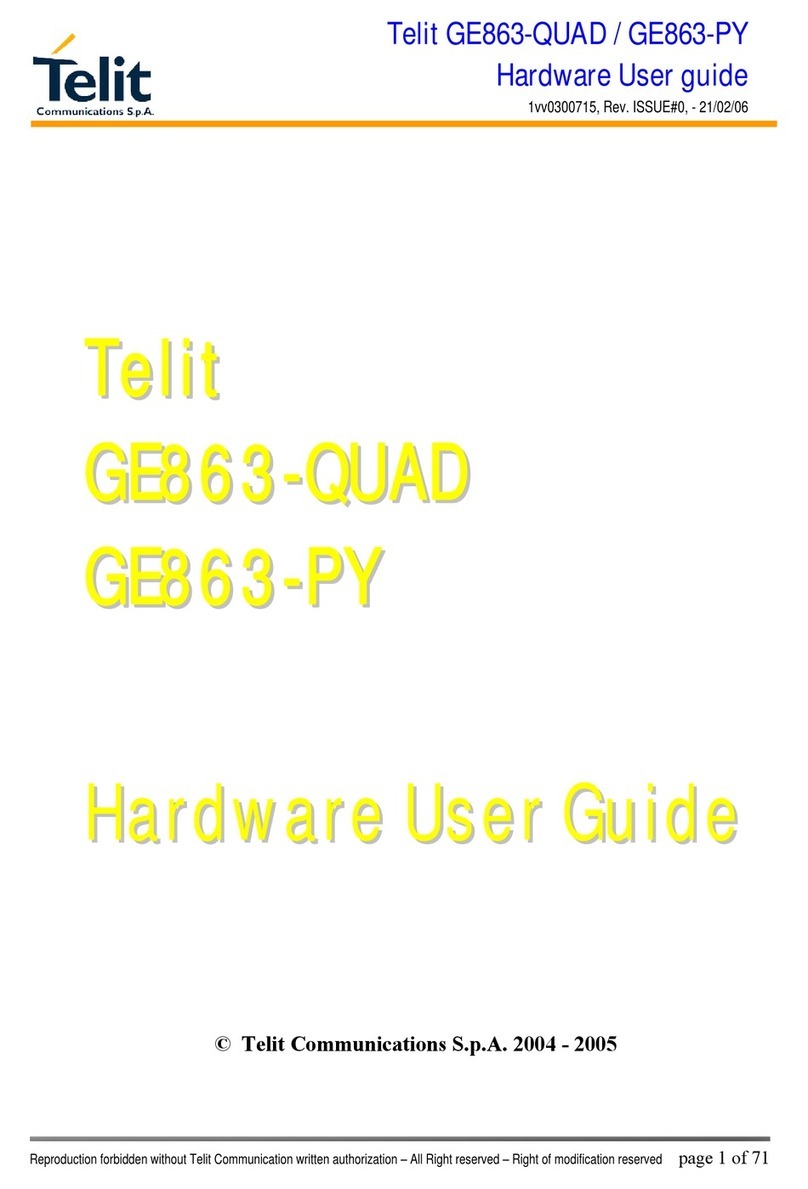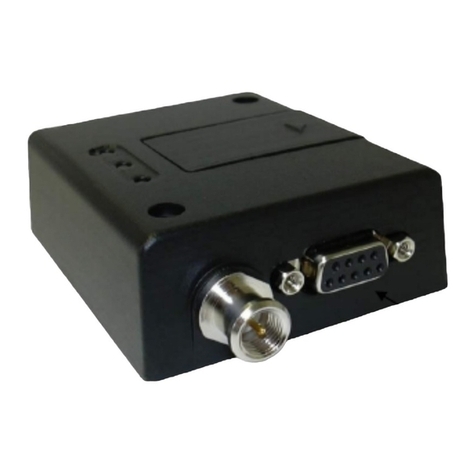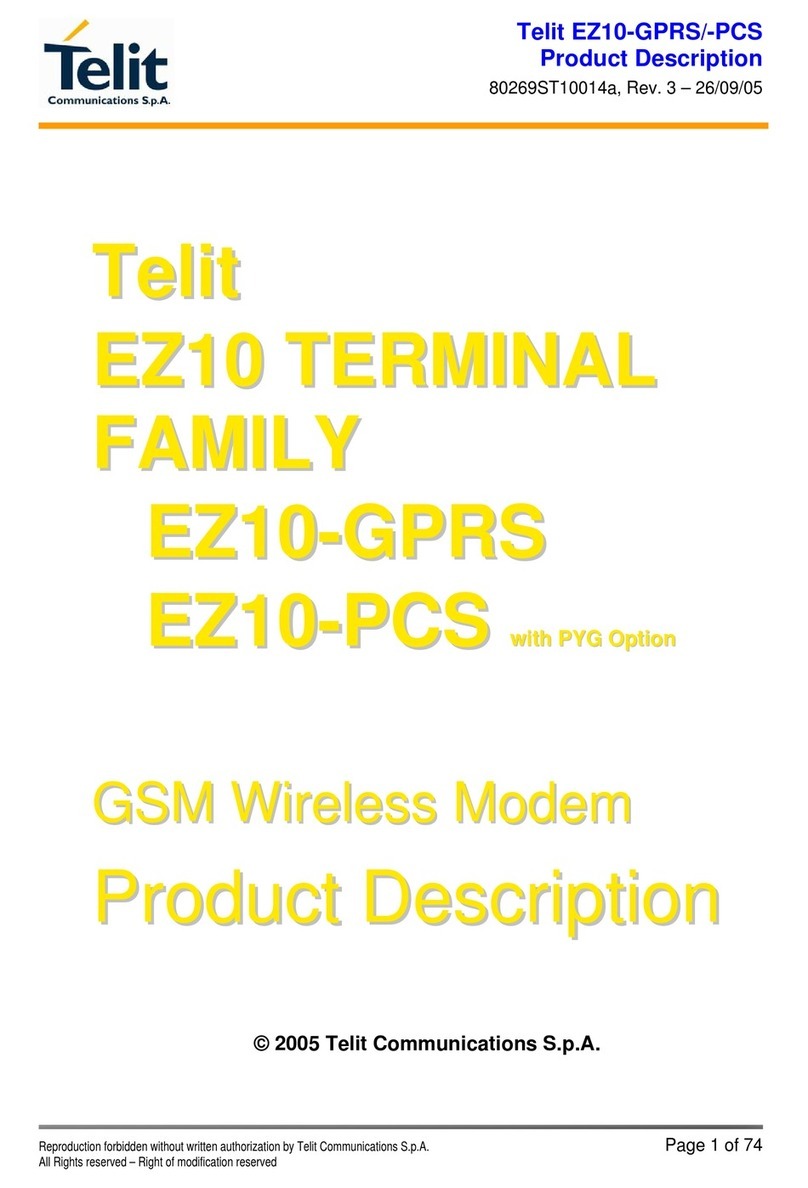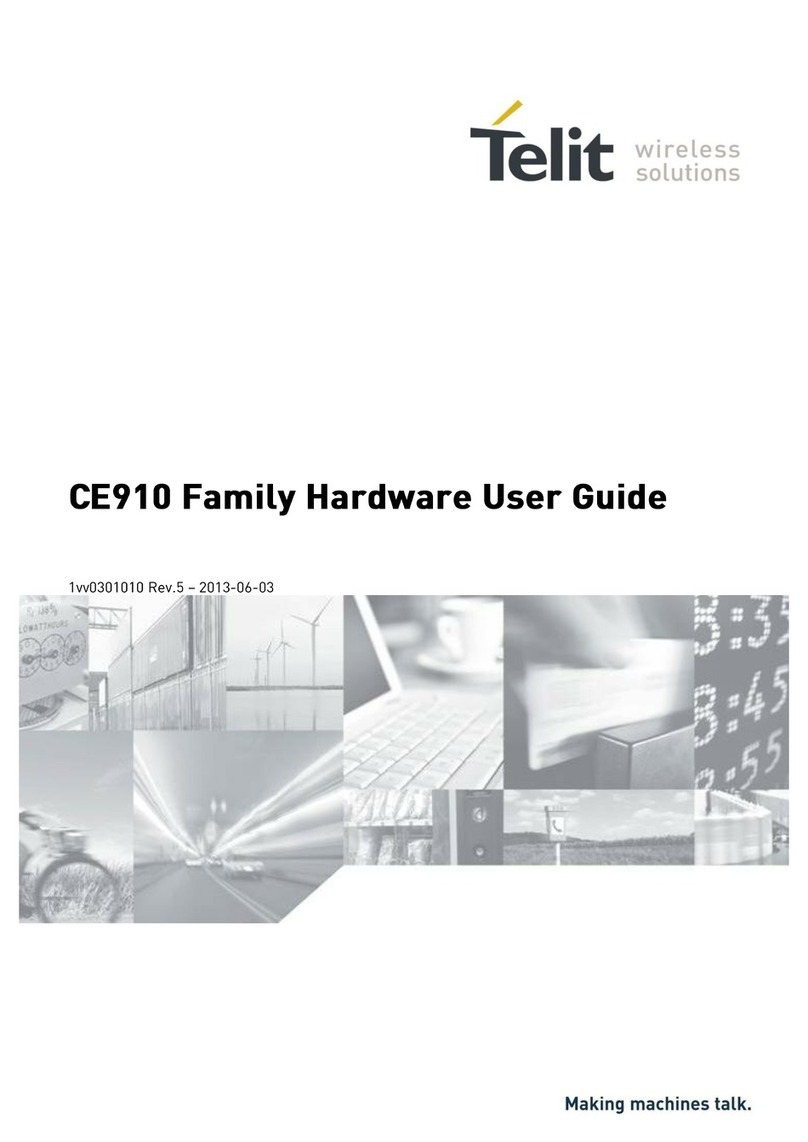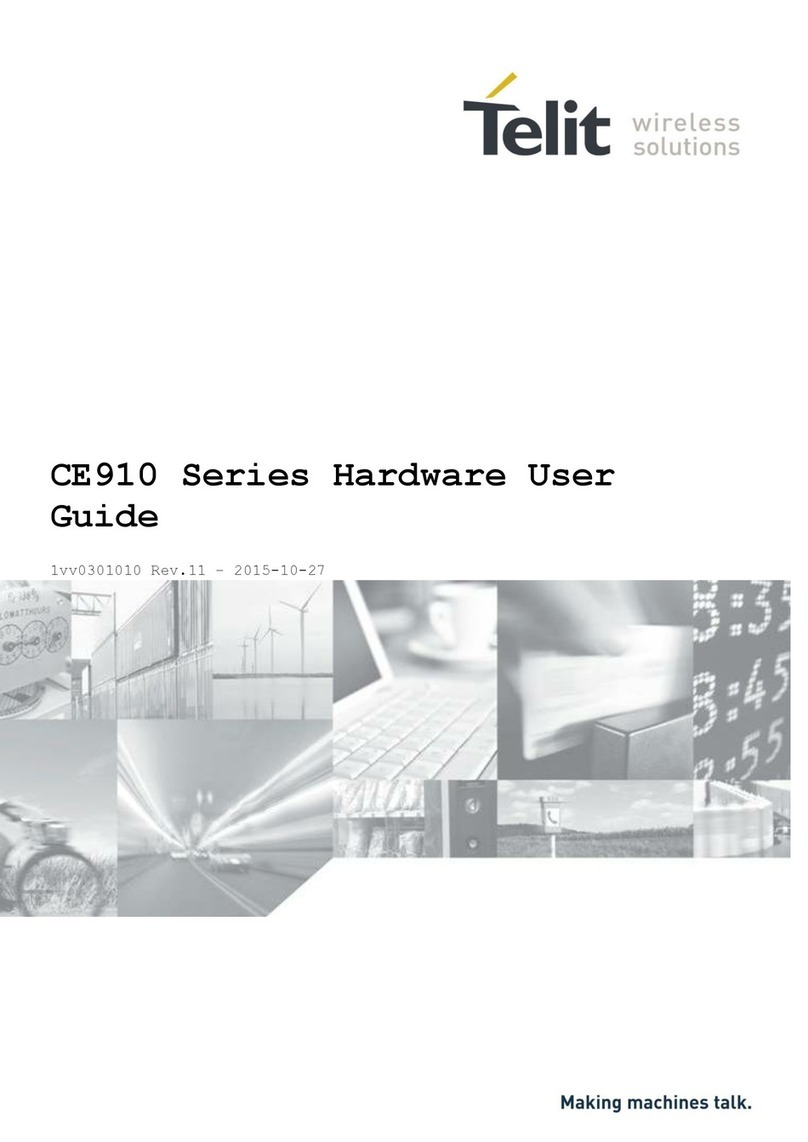TinyOne Plus 868MHz Terminal User Guide
Reproduction forbidden without Telit Communications S.p.A. written authorization - All Rights Reserved page 4 of 47
1vv0300826 Rev.3 – 14/01/2011
CONTENTS
CHAPTER I. INTRODUCTION .....................................................................................................................................5
I.1. AIM OF THE DOCUMENT.................................................................................................................................................................................... 5
I.2. REFERENCE DOCUMENTS ................................................................................................................................................................................. 5
I.3. DOCUMENT CHANGE LOG ................................................................................................................................................................................. 6
I.4. GLOSSARY ...................................................................................................................................................................................................... 7
CHAPTER II. GENERAL CHARACTERISTICS ...........................................................................................................8
II.1. GENERAL REQUIREMENTS .............................................................................................................................................................................. 8
II.2. TEMPERATURE CHARACTERISTICS ................................................................................................................................................................ 10
II.3. MECHANICAL CHARACTERISTICS................................................................................................................................................................... 10
II.4. DC CHARACTERISTICS ................................................................................................................................................................................. 11
II.5. TIMING CHARACTERISTICS ............................................................................................................................................................................ 11
II.6. FUNCTIONAL CHARACTERISTICS .................................................................................................................................................................... 12
II.7. DIGITAL CHARACTERISTICS........................................................................................................................................................................... 14
II.8. ORDERING INFORMATION .............................................................................................................................................................................. 15
CHAPTER III. MECHANICS AND CONNECTION .....................................................................................................16
III.1. MECHANICAL CHARACTERISTICS ................................................................................................................................................................. 16
III.2. CONNECTIONS ............................................................................................................................................................................................ 17
III.3. CABLES DESCRIPTION FOR IP67 CASING ..................................................................................................................................................... 18
CHAPTER IV. STANDARD FIRMWARE : DESCRIPTION OF THE FUNCTIONALITY............................................20
IV.1. CONFIGURATION MODE ............................................................................................................................................................................... 21
IV.2. OPERATING MODE....................................................................................................................................................................................... 23
IV.3. REGISTERS DETAILED USE .......................................................................................................................................................................... 25
IV.4. REGISTERS LIST.......................................................................................................................................................................................... 34
IV.5. CONFIGURATION EXAMPLE .......................................................................................................................................................................... 38
IV.6. MODEMS REFLASHING ................................................................................................................................................................................. 39
IV.7. CONFIGURATION AND DOWNLOAD OVER THE AIR (DOTA) ............................................................................................................................ 40
CHAPTER V. ANNEXES ............................................................................................................................................41
V.1. MODEMS’INSTALLATION:PRINCIPLES AND CAUTIONS ..................................................................................................................................... 41
V.2. CONNECTION TO A RS422 OR RS485 INTERFACE .......................................................................................................................................... 42
V.3. ETSI 300 220-3 VERSION 1.3.1 STANDARDS (SUMMARY)............................................................................................................................... 43
V.4. EXAMPLES OF PROPAGATION ATTENUATION ................................................................................................................................................... 46
V.5. DECLARATIONS OF COMPLIANCE ................................................................................................................................................................... 47

